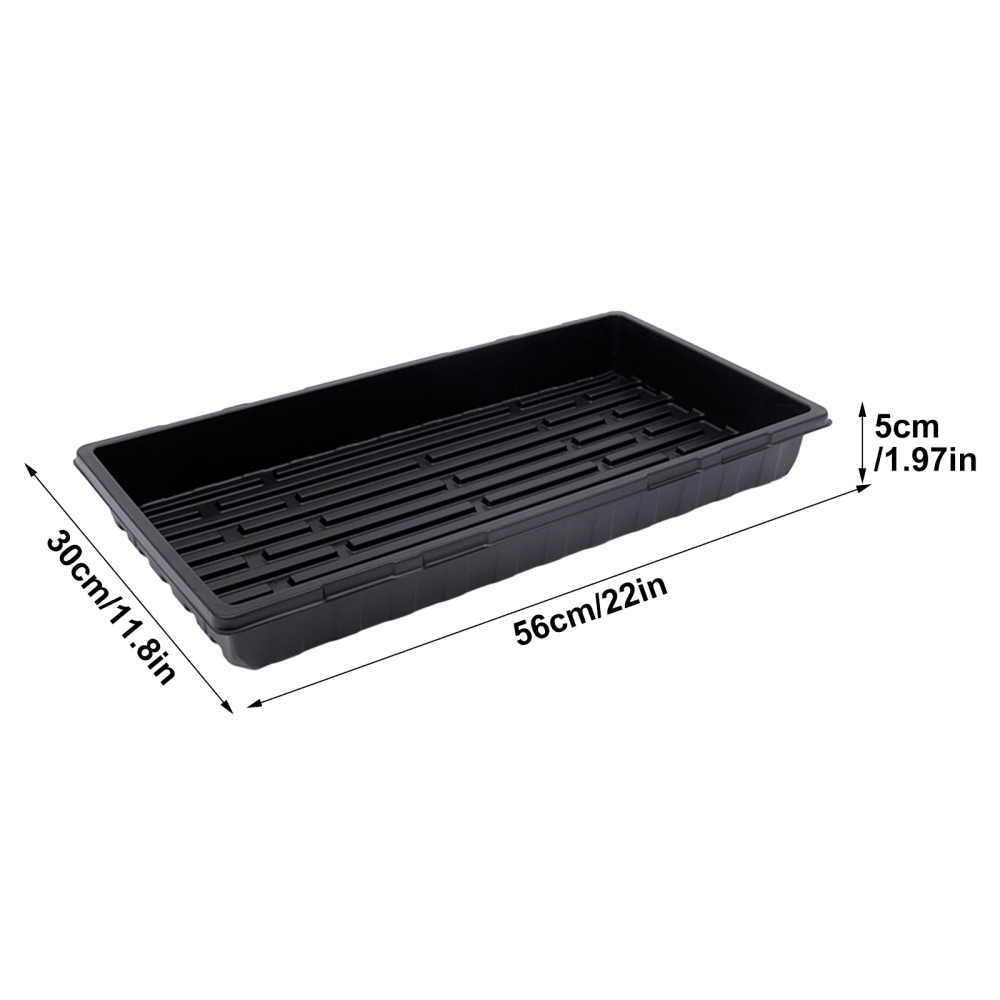Sep. 08, 2023
Agriculture
Planting flat trays and plant seedling trays are both used in gardening and horticulture, but they serve slightly different purposes and have some distinctions. Let's explore the key differences between these two types of trays:
Purpose:
Planting Flat Trays: Planting flat trays, often referred to as flat trays or flat seed trays, are primarily used for germinating seeds or starting young plants from seeds. They provide a flat surface for seeds to be sown and germinate in a uniform manner.
Plant Seedling Trays: Plant seedling trays, also known as cell trays, seedling flats, or plug trays, are designed specifically for the transplanting and initial growth of young seedlings or transplants. These trays have compartments or cells that provide individual space for each plant, promoting root development and easy transplanting.
Design:
Planting Flat Trays: Planting flat trays are flat, shallow trays without individual compartments. They usually have a flat surface with no divisions or cells. This design allows for the efficient use of space for germination but does not provide separate areas for individual plants.

Plant Seedling Trays: Plant seedling trays are designed with individual cells or compartments. Each cell is typically separated from the others, providing distinct spaces for each plant. This design is ideal for preventing root entanglement and simplifying the process of transplanting seedlings into larger containers or the garden.
Plant Growth Stage:
Planting Flat Trays: These trays are typically used during the initial stages of plant growth when seeds are germinating. Once the seedlings reach a certain size, they need to be transplanted into individual pots or cell trays for further growth.
Plant Seedling Trays: Plant seedling trays are used for nurturing seedlings beyond the germination phase. They provide ample space for the development of roots and top growth, allowing the seedlings to grow to a size suitable for transplanting into the garden or larger containers.
Seedling Protection:
Planting Flat Trays: Since planting flat trays lack individual compartments, seedlings in these Hydroponic Trays may be more vulnerable to competition for resources and can become entangled, making it challenging to separate and transplant them without damaging the roots.
Plant Seedling Trays: Plant seedling trays offer better protection for individual seedlings. Each seedling has its own cell, which prevents root entanglement and makes it easier to transplant without disturbing neighboring plants.
Transplanting Convenience:
Planting Flat Trays: Transplanting seedlings from planting flat trays can be more challenging because the roots of neighboring seedlings may be intertwined. Care must be taken to avoid damaging the fragile young plants during the transplanting process.
Plant Seedling Trays: Transplanting from plant seedling trays is relatively straightforward. Each seedling can be removed from its cell without disturbing the others, ensuring a smoother transplanting process.
In summary, planting flat trays are primarily used for seed germination, providing a flat surface for seeds to sprout, while plant seedling trays are designed for nurturing young seedlings with individual compartments for each plant, making transplanting easier and less damaging to the delicate roots. The choice between these trays depends on your specific gardening needs and the stage of plant growth you are working with.
Previous: How do You Use Planting Trays?
Next: Cultivating Success: The Advantages of Commercial Greenhouses
If you are interested in sending in a Guest Blogger Submission,welcome to write for us!
All Comments ( 0 )